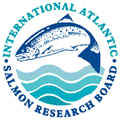SMOLTrack III
Quantifying smolt survival from source to sea: informing management strategies to optimise returns: SMOLTrack III

Recent marine survival estimates are amongst the lowest recorded in decades and indicate that as little as 3% of wild smolts now survive to return as adults. In recent decades, survival at sea has generally been accepted as the key determinant of river stock abundance. However, recent research conducted in Denmark, England, Ireland, Spain, Sweden and Northern Ireland through the EC-funded SMOLTrack and related initiatives have indicated that smolt mortalities during the early outward migratory phase from ‘source to sea’ may be much greater than previously assumed. In addition, various studies have demonstrated that a reduction in negative pressures (e.g. predation, aquaculture) on smolts in this zone of influence can ultimately boost associated adult returns. Therefore, it has become apparent that significant knowledge gaps remain to comprehensively understand, quantify and partition the principal cumulative factors responsible for Atlantic salmon smolt survival during this critical life stage.
Successful outward migration is likely influenced by a variety of factors such as smolt size condition and physiological status, habitat structure, predation pressure, sea lice-induced mortality from salmon aquaculture (if present) and the effects of regional and local climatic conditions including flow and temperature regimes. The proposed project aims to identify and evaluate the relative contribution of several of the principal factors responsible for early smolt and post-smolt mortality in order to better inform the development of fisheries management strategies that may optimise natural smolt production and consequently enhance the probability of wild adult returns. The project will evaluate potential pressures on migrating smolts identified from several previous SMOLTrack work packages, including predator bottlenecks and thermal stressors. As migration survival is best assessed via telemetric studies, an additional central focus of this project is to validate the effect of tagging on fish behaviour in order to better ensure the accuracy of such assessments. In the freshwater, transitional and coastal zones, fisheries managers have much greater scope to implement successful measures to reduce pressures on out-migrating salmon compared to the vast oceanic environment, where the stock protection measures are principally limited to regulating commercial fisheries.
To address these issues, the following work packages (WP) will comprise the project:
- WP1 Eval-smolt
- WP2 Thermo-smolt
- WP3 Hand-smolt
The following EU jurisdictions will participate in the project:
- Denmark
- Finland (new partner)
- England
- Ireland
- Northern Ireland
- Portugal (new partner)
- Sweden
- Spain
The existing SMOLTrack partnership, which has been operating since 2017, together with its new partners, has extensive experience in migratory fish research and particularly telemetry studies. The distribution of experienced project partners, across the wide latitudinal distribution of salmon in Europe, will allow the project to investigate salmon under varying climatic ranges. SMOLTrack I & II have already produced several important research outputs and aim to advance understanding further through SMOLTrack III.
More information on the SMOLTrack Projects can be found at https://www.smoltrack.eu/
